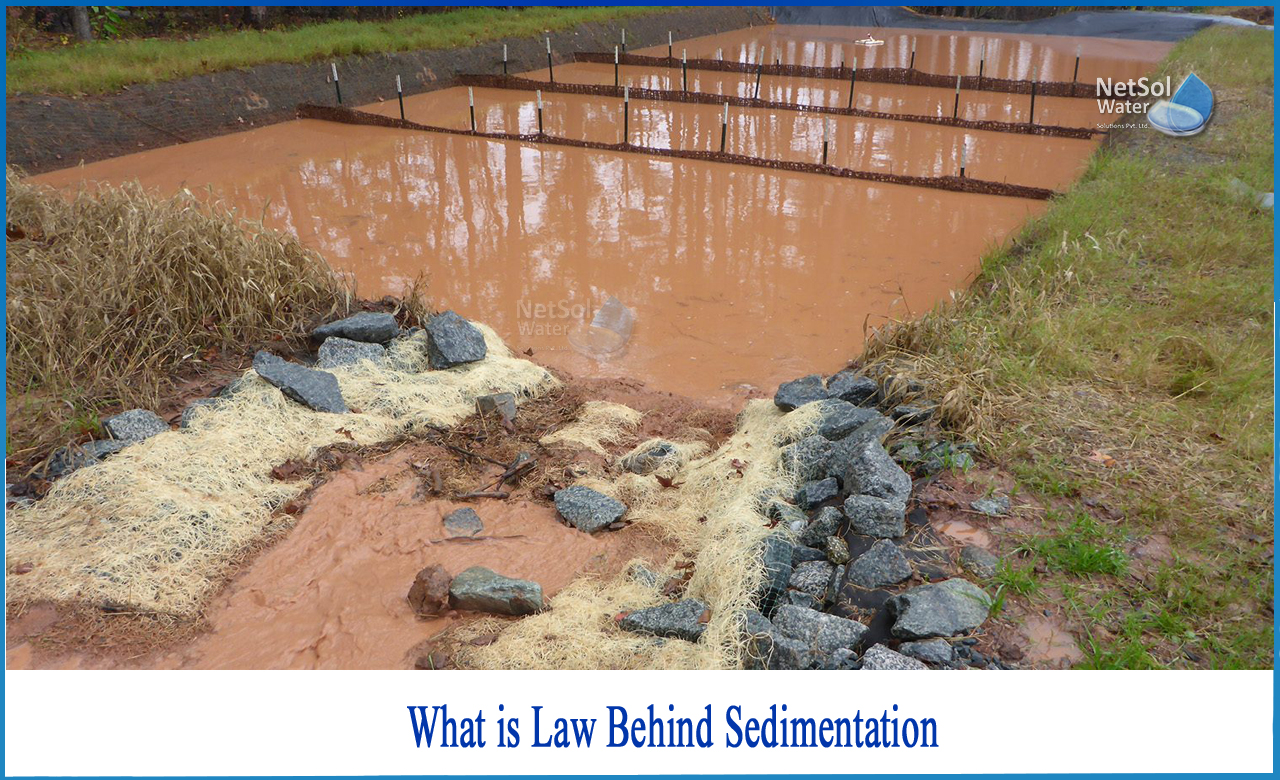What is law behind sedimentation?
Sedimentation is a typical method of water and wastewater treatment. It is a method of removing particles from wastewater that float and settle.
Sedimentation tanks are used in the process to remove bigger materials. After sedimentation, other treatment techniques may be applied. Understanding how sedimentation is employed in the treatment of drinking water and wastewater is critical.
In water treatment, what is sedimentation?
Municipalities employ sedimentation as one of the water treatment options. Suspended solids are removed from water using gravity.
The efficacy is determined by the particle size and weight. Heavy particles descend whereas suspended solids with a specific gravity comparable to water remain suspended. In wastewater treatment, the sedimentation process is commonly carried out in tanks of various forms.
Sedimentation-Types
Plain Sedimentation:It is the natural gravity-driven process of settling sediments and contaminants in raw water to the bottom of the sedimentation basin without the use of any chemicals. This is a far less expensive sedimentation technology that is found in almost every water filtering and purification systems.
Clarifier and Contact Sedimentation: The chemicals are combined in water, and the same water is cycled using pumps for two hours each day, and suspended particles sink to the bottom of the reservoir or tank, among other things.
Sedimentation or Clarification Assisted by Chemicals: Chemicals are introduced to water, and the suspended particles and other contaminants stick together and create floc, which settles at the bottom of the basin after mixing. On the basis of some assumptions, the most often employed procedure is chemically aided horizontal sedimentation.
Water flows in an uneven pattern through a tank, therefore the goal of sedimentation is to establish conditions where the flow is uniform for a long enough length of time, allowing the greatest quantity of floc to settle before the water reaches the tank's end.
Sedimentation's Basic Principle
Suspended water solids, which have a specific gravity larger than water, tend to settle by gravity as soon as turbulence is reduced by allowing storage.
The specific gravity of inorganic suspended solids is approximately 2.65, whereas the specific gravity of organic suspended solids is around 1.04.Particles with a specific gravity of 1.20 or less sink to the bottom of the tank quickly. It is, however, difficult to produce the settling of lighter particles.
What is hydraulic subsidence?
Hydraulic subsidence is the phenomena of particles settling down to the bottom of the sedimentation tank, and each particle has its own hydraulic settling value, creating hydraulic subsidence on it.
Sedimentation basins are usedin which the flow is slowed. The detention period is the average theoretical duration for which the water is held in the settling tank.
What do we offer?
If you are curious to know more about the sedimentation process and how to enhance the quality of water and wastewater, then you are at the right place!
Netsol Water is Greater Noida-based leading water & wastewater treatment plant manufacturer. We are industry's most demanding company based on client review and work quality. We are known as best commercial RO plant manufacturers, industrial RO plant manufacturer, sewage treatment plant manufacturer, Water Softener Plant Manufacturers and effluent treatment plant manufacturers. Apart from this 24x7 customer support is our USP. Call on +91-9650608473, or write us at enquiry@netsolwater.com for any support, inquiry or product-purchase related query.



